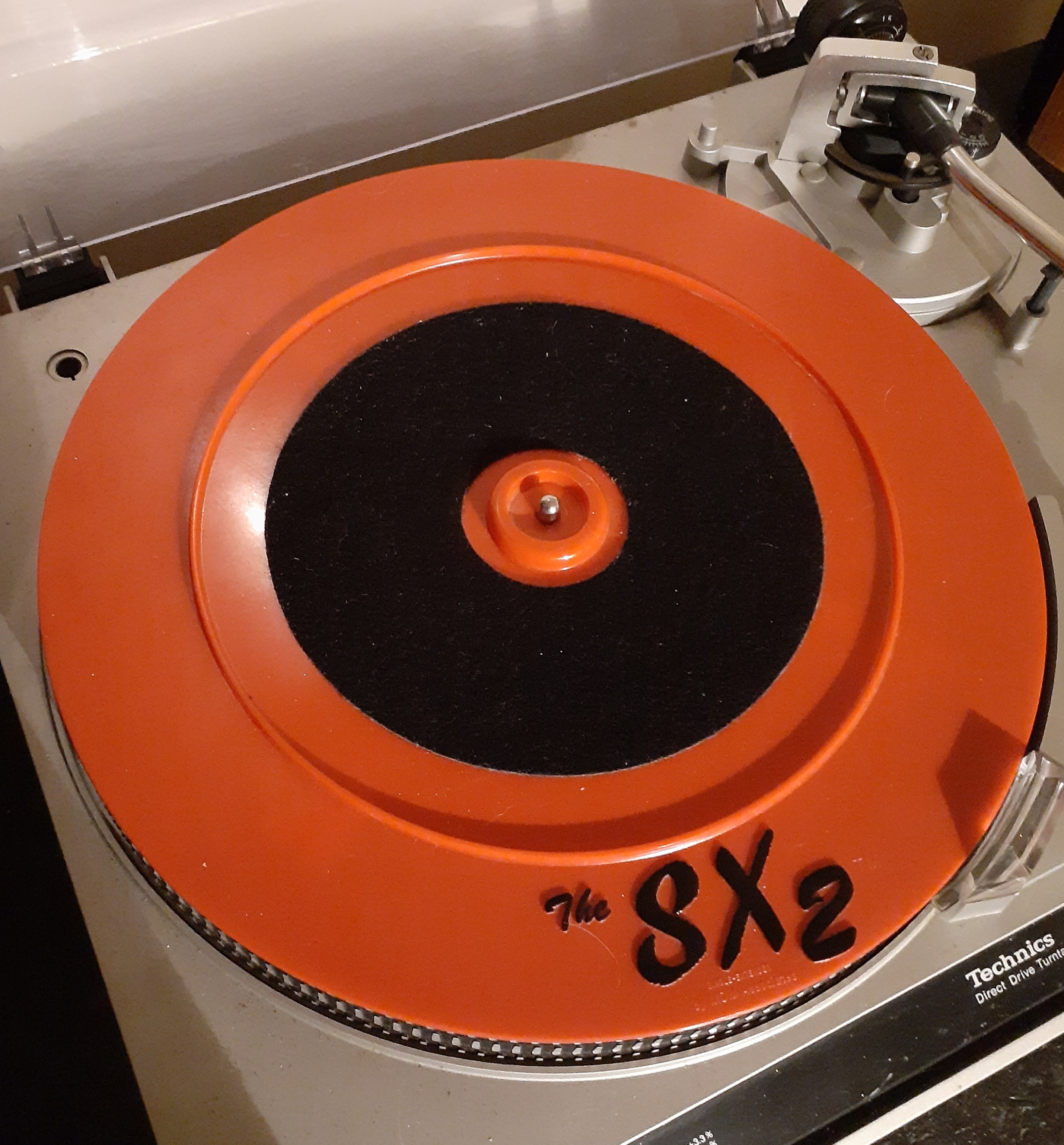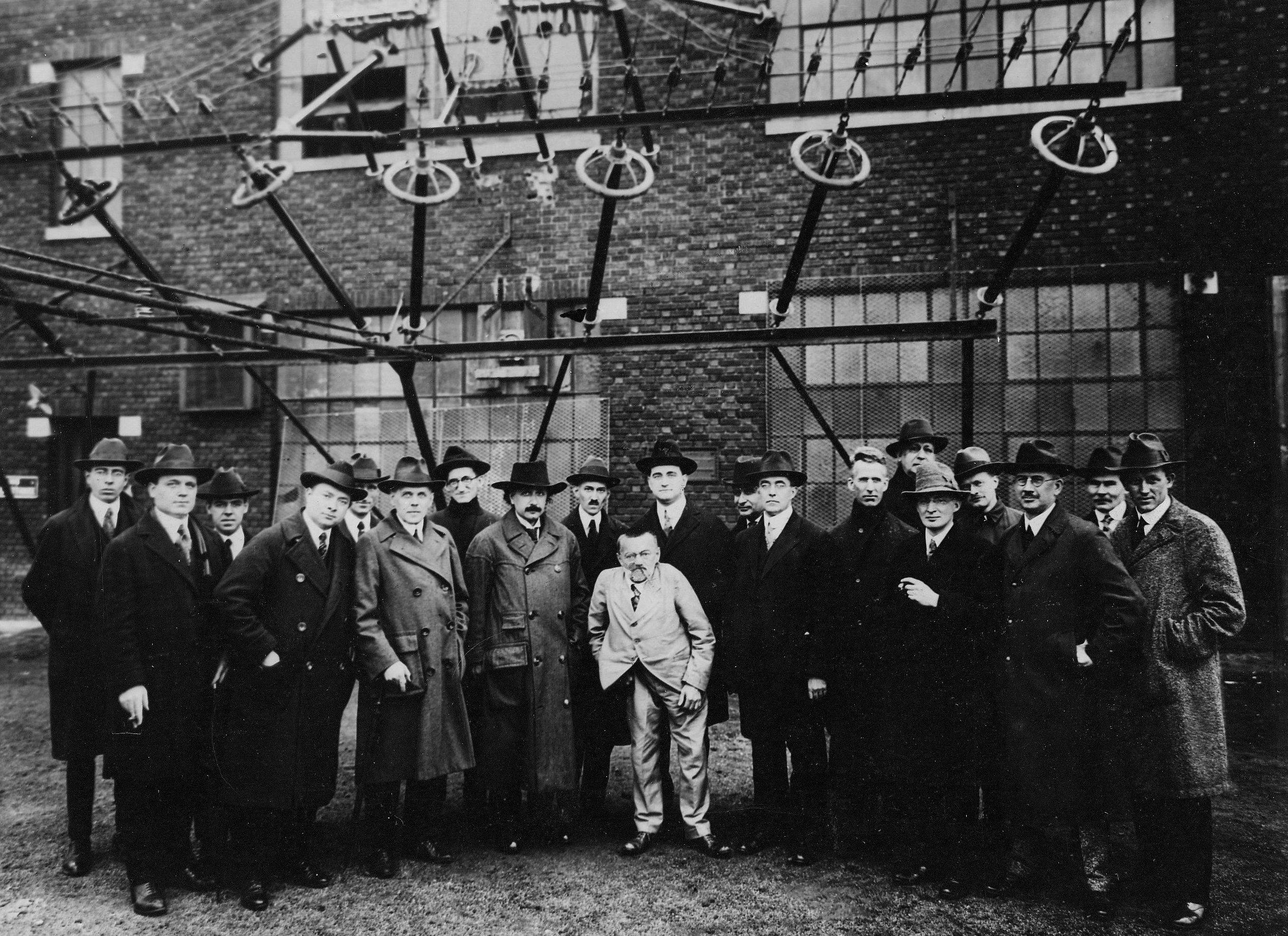|
45 Rpm Adapter
A 45 rpm adapter (also 45 rpm record insert, 45 rpm spindle adapter, 7-inch adapter or spider, the common size of 45 RPM records) is a small plastic or metal insert that goes in the middle of a 45-rpm record so it can be played on the standard size spindle of a turntable. The adapter could be a small solid circle that fits onto the spindle (meaning only one 45 could be played at a time) or a larger adapter that fits over the entire spindle of a record changer, permitting a stack of 45s to be played. These are often referred to as 45 spindles. A few manufacturers supplied a complete change of spindle for 45s. The first 45 rpm inserts were introduced by the Webster-Chicago Corporation, also known as Webcor. They were made of solid zinc, difficult to insert into a record and almost impossible to remove without breaking the disc. A differently shaped, but similarly difficult-to-use metal adapter was made by Fidelitone. Capitol Records for a time produced what they called "Option ... [...More Info...] [...Related Items...] OR: [Wikipedia] [Google] [Baidu] |
Gramophone Record
A phonograph record (also known as a gramophone record, especially in British English), or simply a record, is an analog sound storage medium in the form of a flat disc with an inscribed, modulated spiral groove. The groove usually starts near the periphery and ends near the center of the disc. At first, the discs were commonly made from shellac, with earlier records having a fine abrasive filler mixed in. Starting in the 1940s polyvinyl chloride became common, hence the name vinyl. The phonograph record was the primary medium used for music reproduction throughout the 20th century. It had co-existed with the phonograph cylinder from the late 1880s and had effectively superseded it by around 1912. Records retained the largest market share even when new formats such as the compact cassette were mass-marketed. By the 1980s, digital media, in the form of the compact disc, had gained a larger market share, and the record left the mainstream in 1991. Since the 1990s, records con ... [...More Info...] [...Related Items...] OR: [Wikipedia] [Google] [Baidu] |
Phonograph
A phonograph, in its later forms also called a gramophone (as a trademark since 1887, as a generic name in the UK since 1910) or since the 1940s called a record player, or more recently a turntable, is a device for the mechanical and analogue recording and reproduction of sound. The sound vibration waveforms are recorded as corresponding physical deviations of a spiral groove engraved, etched, incised, or impressed into the surface of a rotating cylinder or disc, called a "record". To recreate the sound, the surface is similarly rotated while a playback stylus traces the groove and is therefore vibrated by it, very faintly reproducing the recorded sound. In early acoustic phonographs, the stylus vibrated a diaphragm which produced sound waves which were coupled to the open air through a flaring horn, or directly to the listener's ears through stethoscope-type earphones. The phonograph was invented in 1877 by Thomas Edison. Alexander Graham Bell's Volta Laboratory made s ... [...More Info...] [...Related Items...] OR: [Wikipedia] [Google] [Baidu] |
45rpm
A phonograph record (also known as a gramophone record, especially in British English), or simply a record, is an analog sound storage medium in the form of a flat disc with an inscribed, modulated spiral groove. The groove usually starts near the periphery and ends near the center of the disc. At first, the discs were commonly made from shellac, with earlier records having a fine abrasive filler mixed in. Starting in the 1940s polyvinyl chloride became common, hence the name vinyl. The phonograph record was the primary medium used for music reproduction throughout the 20th century. It had co-existed with the phonograph cylinder from the late 1880s and had effectively superseded it by around 1912. Records retained the largest market share even when new formats such as the compact cassette were mass-marketed. By the 1980s, digital media, in the form of the compact disc, had gained a larger market share, and the record left the mainstream in 1991. Since the 1990s, records co ... [...More Info...] [...Related Items...] OR: [Wikipedia] [Google] [Baidu] |
Webster-Chicago
The Webster Chicago Corporation was a maker of electronic equipment in Chicago, Illinois. Many products were sold under the brand name Webcor. The product line included record changers, wire recorders and reel to reel tape recorders. They also made phonograph amplifiers that are now used as guitar amplifiers in some cases. These amplifiers' sounds are similar to the sounds of the Fender Princeton The Fender Princeton was a guitar amplifier made by Fender. It was introduced in 1947 and discontinued in 1979. After Fender introduced the Champ Amp in 1948, the Princeton occupied the next to the bottom spot in the Fender line. Fender Princet .... They are valued for their all-tube signal path and hand-wired circuit. Many Webster-Chicago record changers were installed in Magnavox home entertainment systems in the 1940s and early 1950s. Their leading business was wire recorders. They purchased the rights to produce recorders in 1945 from the Armour Research Foundation. Webster ... [...More Info...] [...Related Items...] OR: [Wikipedia] [Google] [Baidu] |
Webcor
The Webster Chicago Corporation was a maker of electronic equipment in Chicago, Illinois. Many products were sold under the brand name Webcor. The product line included record changers, wire recorders and reel to reel tape recorders. They also made phonograph amplifiers that are now used as guitar amplifiers in some cases. These amplifiers' sounds are similar to the sounds of the Fender Princeton. They are valued for their all-tube signal path and hand-wired circuit. Many Webster-Chicago record changers were installed in Magnavox home entertainment systems in the 1940s and early 1950s. Their leading business was wire recorders. They purchased the rights to produce recorders in 1945 from the Armour Research Foundation IIT Research Institute (IITRI),Greenbaum & Wheeler (1967), cover sheet (technical paper).McCormac; et al. (1967), p. i (book)."IITRI" (or "iiTRi") is used on cover sheets of technical paper documents in prior decades. also known historically and .... Webster- ... [...More Info...] [...Related Items...] OR: [Wikipedia] [Google] [Baidu] |
Capitol Records
Capitol Records, LLC (known legally as Capitol Records, Inc. until 2007) is an American record label distributed by Universal Music Group through its Capitol Music Group imprint. It was founded as the first West Coast-based record label of note in the United States in 1942 by Johnny Mercer, Buddy DeSylva, and Glenn E. Wallichs. Capitol was acquired by British music conglomerate EMI as its North American subsidiary in 1955. EMI was acquired by Universal Music Group in 2012, and was merged with the company a year later, making Capitol and the Capitol Music Group both distributed by UMG. The label's circular headquarters building is a recognized landmark of Hollywood, California. Both the label itself and its famous building are sometimes referred to as "The House That Nat Built." This refers to one of Capitol's most famous artists, Nat King Cole. Capitol is also well known as the U.S. record label of the Beatles, especially during the years of Beatlemania in America from 1964 ... [...More Info...] [...Related Items...] OR: [Wikipedia] [Google] [Baidu] |
David Sarnoff
David Sarnoff (February 27, 1891 – December 12, 1971) was an American businessman and pioneer of American radio and television. Throughout most of his career, he led the Radio Corporation of America (RCA) in various capacities from shortly after its founding in 1919 until his retirement in 1970. He ruled over an ever-growing telecommunications and media empire that included both RCA and NBC, and became one of the largest companies in the world. Named a Reserve Brigadier General of the Signal Corps in 1945, Sarnoff thereafter was widely known as "The General." Sarnoff is credited with ''Sarnoff's law'', which states that the value of a broadcast network is proportional to the number of viewers. Early life and career David Sarnoff was born to a Jewish family in Uzlyany, a small town in the Russian Empire, now part of Belarus, the son of Abraham Sarnoff and Leah Privin. Abraham emigrated to the United States and raised funds to bring the family. Sarnoff spent much of his early c ... [...More Info...] [...Related Items...] OR: [Wikipedia] [Google] [Baidu] |
SX2 -adapter
SX, Sx, sx, or Sx may refer to: In medicine * Sx, symptoms * Sx, surgery In music * SX (band), a Belgian indie pop band * S-X (producer), a British producer and singer In technology: * .sx, the country code top-level domain for Sint Maarten * Betacam SX, a type of videotape for Betacam * 1000BASE-SX, a fiber optic gigabit Ethernet standard * MAN SX, a range of high mobility tactical trucks * Parallax SX, a range of micro-controllers made by Ubicom * NEC SX architecture of supercomputers Other uses: * ''SX News'', a gay and lesbian newspaper in Australia * Skybus Airlines (IATA airline code SX) * AMA Supercross Championship, a form of off-road motorcycle racing * Shanxi, a province of China (Guobiao abbreviation SX) * Ŝ, a letter in the Esperanto alphabet See also * ''Sx Tape ''Sx_Tape'' (also stylized as ''SX_TAPE'' and ''sxtape'') is a 2013 American Found footage (film technique), found-footage horror film directed, edited, and photographed by Bernard Rose (director), Be ... [...More Info...] [...Related Items...] OR: [Wikipedia] [Google] [Baidu] |
Wakefield, Massachusetts
Wakefield is a town in Middlesex County, Massachusetts in the Greater Boston metropolitan area, incorporated in 1812 and located about north-northwest of Downtown Boston. Wakefield's population was 27,090 at the 2020 census. Wakefield offers an assortment of activities around the local lake, Lake Quannapowitt. History Wakefield was first settled in 1638 and was originally known as Lynn Village. It officially separated from Lynn and incorporated as Reading in 1644 when the first church (First Parish Congregational Church) and the first mill were established. This first corn mill was built on the Mill River on Water Street, and later small saw mills were built on the Mill River and the Saugus River. Thomas Parker (1609–1683) was one of the founders of Reading, and his home was in what is now downtown Wakefield (on the east side of Crescent Street where it intersects Princess Street). He also was a founder of the 12th Congregational Church (now the First Parish Congregation ... [...More Info...] [...Related Items...] OR: [Wikipedia] [Google] [Baidu] |





